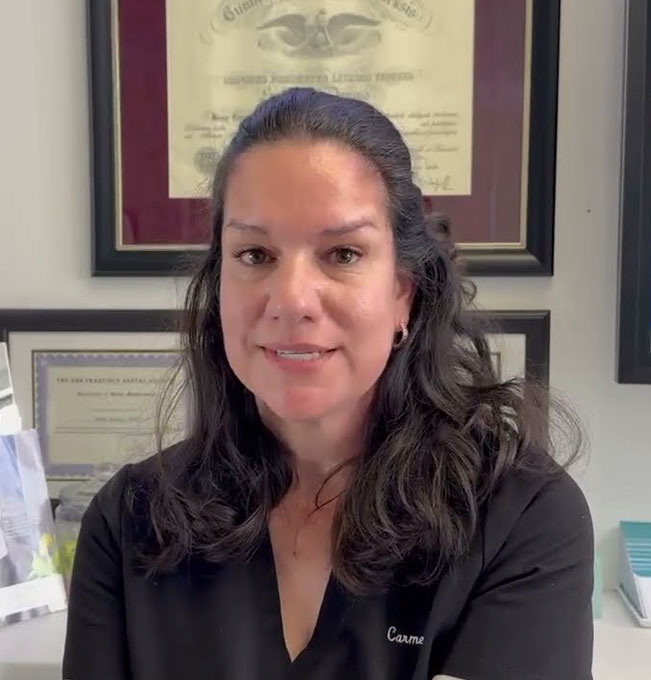What is Myofunctional Therapy?
Myofunctional therapy is a specialized program specifically designed for the correction of tongue thrust problems. Certified oral myologists best perform myofunctional therapy with a series of exercises that can be done by you, the patient.
Lessons 1-3 (practice 3 times daily for 5 minutes)
- 1. Tongue tip resistance
Rationale: Helps to strengthen the lateral muscles of the tongue, creating a sharper point of the tongue.
Procedure: Stick the tongue out making it as sharp pointed as possible. Do not allow it to touch the teeth or lips. Place a tongue depressor against the very tip of the tongue. Press, exerting equal force with both the tongue and the stick, trying to keep the tip of the tongue as pointed as possible. Hold for a count of three and relax. Follow the same procedure for 5 repetitions. Do not do this exercise if you have TMJ/jaw soreness or issues.
- 2. Bite Pops
Rationale: Helps to strengthen and aid in the function of all the muscles that help lift and contract the tongue. Conditions the tongue to lift into the hard palate when the teeth are closed and stretch the lingual frenum.
Procedure: Place your fingertips on your temples (temporalis muscles), bite the teeth together and suck the tongue up hard into the palate. Open your mouth widely keeping the tongue against your palate; then click your tongue down (make an audible noise). The contraction of the temporalis muscle should be felt as the teeth are biting together. Repeat 5 to 10 times.
- 3. Open and Close
Rationale: Helps to strengthen the muscles that lift the tongue, coordinate the lateral muscles and tone the muscles of the tongue.
Procedure: With the tongue sucked up against the hard palate, open your mouth. Keeping the tongue sucked up, close the teeth, leaving the lips apart. Again open and close. Be sure that the tongue remains sucked up flat. Do not allow the tongue to curl
Lessons 4-6 (practice 3 times daily for 5 minutes)
- 4. Tongue drags
Rationale: Helps to strengthen the muscles that lift the tongue, improve control, and tone the muscles of the tongue.
Procedure: Tongue drags are used to train the muscles of the back of the tongue. With the mouth open slightly, suck the tongue up into the roof of the mouth. Drag it back flat against the palate as far as possible before the tongue drops out of the palate. Continue until the tongue is able to pull back to the soft palate. Be sure not to let the tongue curl. The first stage of this exercise is done with the mouth open. When this is performed with ease, the tongue drags should then be performed with the posterior teeth together and the lips apart. Later in the therapy program both the teeth and lips will be together. Repeat this procedure 5 to 10 times.
- 5. Trap Water
Rationale: Helps the patient to understand the correct muscle function of a normal swallow, tones the muscles that lift the tongue, and helps the patient to perform the normal swallow more accurately.
Procedure: From a glass of water, suck a small amount of water through a straw onto the top of the tongue. Hold it up against the hard palate for a count of 5. Make sure the tip of the tongue is on the spot and the sides of the the hard palate. Bite the back teeth together and swallow, lifting the entire tongue into the palate. Repeat 5 to 10 times.
- 6. Swish Swallow
Rationale: Helps the patient to learn to collect saliva and liquids with the lips closed and the teeth together.
Procedure: Take a sip of water and swish the water around the mouth. After swishing back and forth several times, push the water into the cheeks then suck it back forcefully between the teeth and swallow. Practice 5 or 10 swallows a day.



















 260 Stockton Street, 3rd Fl
San Francisco
260 Stockton Street, 3rd Fl
San Francisco 415.399.9200
415.399.9200 Practice Hours
Practice Hours















